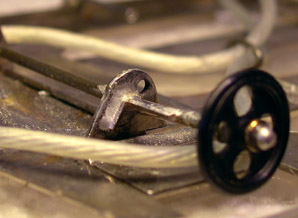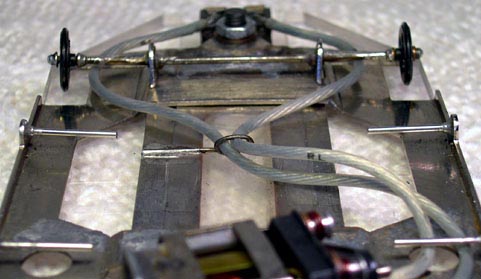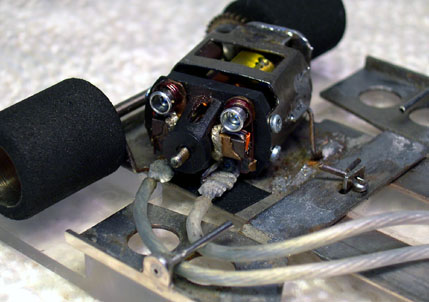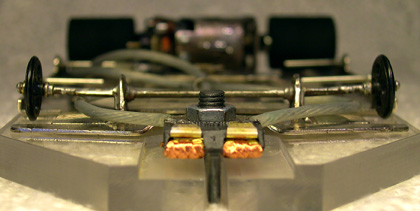Slotracing. Page 1.
Some suggestions of how you can setup a Saloon car.
The pictures is of the chassi that has won the pole in Stockholm Slot Racing Club five times 2004, twice in 2005 and until now, three times in 2006. My homepage has taken about a year to write (in periods), but this information is still valid for those who are interested in Saloon cars.
A close-up on the front-wheels. Note the reinforcement of the front-axel.
This has saved me a lot of trouble. Some dents after impacts in the chassis can be seen.
Note how I like to draw the wiring. There are other methods and they work as well.
Note also that the floating (outer) chassi is a bit higher in the front than the central chassi.
This is to avoid drag or friction from the track.
I have moved the wiring to the lower side of the motor.
This will lower the point of gravity a bit.
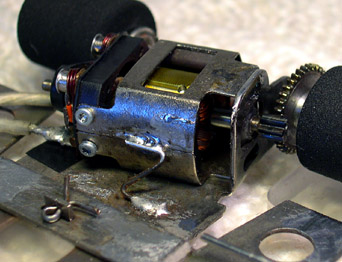
This is how I like to secure the motor to the chassis. To have a support leg
gives me a fast way of removing the motor. It also gives a certain amount
of flex, so it will not break in a heavy shunt. The motor is a ProSlot lightweight
can with Brazilian Flag magnets and a ProSlot 45 degree arm.
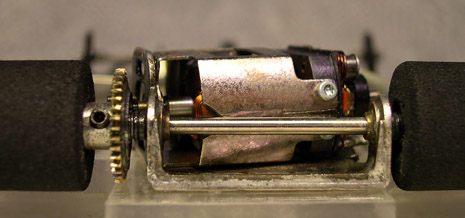
I always use on our track a 35 or 36 crown gear, as it's diameter is so small that
it will not touch the track. This gives room for a closer margin to the track clearance
that is on our track 0,8 mm. Note also the chassis-reinforcement that is just necessary
to have. Otherwise any shunt from behind can make your car impossible to drive.
The most important thing of the setup, is to keep the front end as low as possible.
I use a cut down guide and very closely adjust it with spacers – on the track – to
the narrowest possible position. If the front end of the car wont hold, it will be next
to impossible to drive. You cannot push the car close to it's limits as it will feel very
insecure to drive. With a very strong front end, you can also adjust the back end to
have more grip and that means a faster car around the track. Note again that the
floating chassis is a bit higher in the front than the central chassis. This is necessary to
avoid any drag with this unit. Only the pickup and the front wings (and rear tires
of course) should be in contact with the track.
